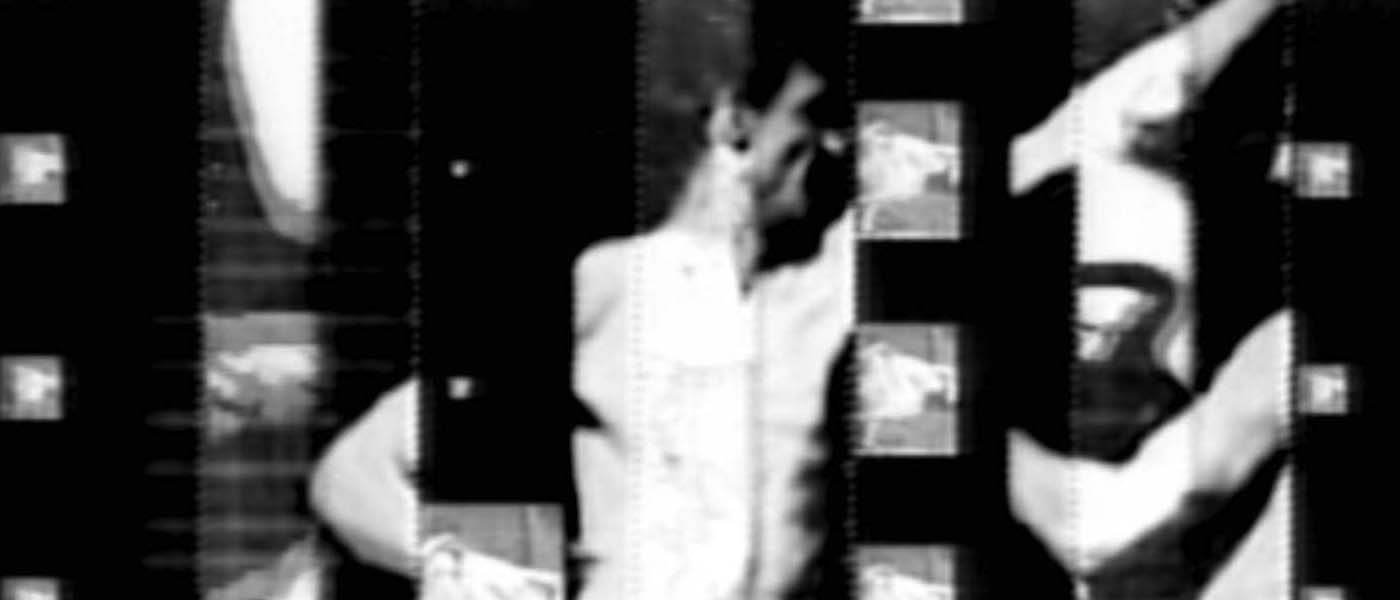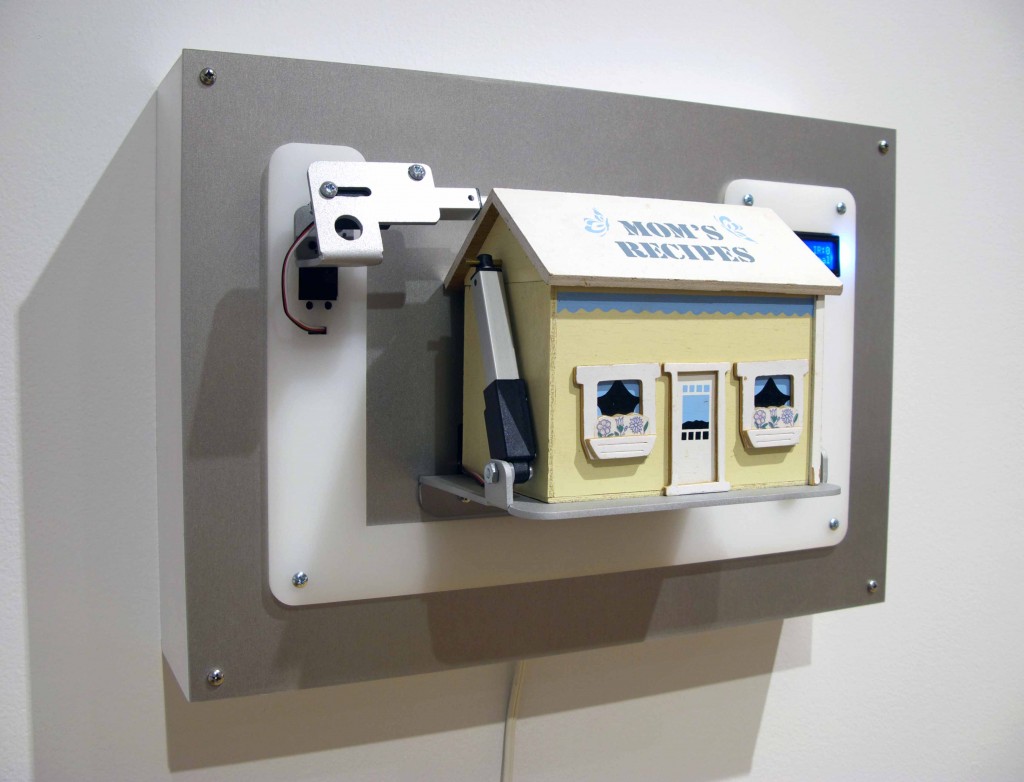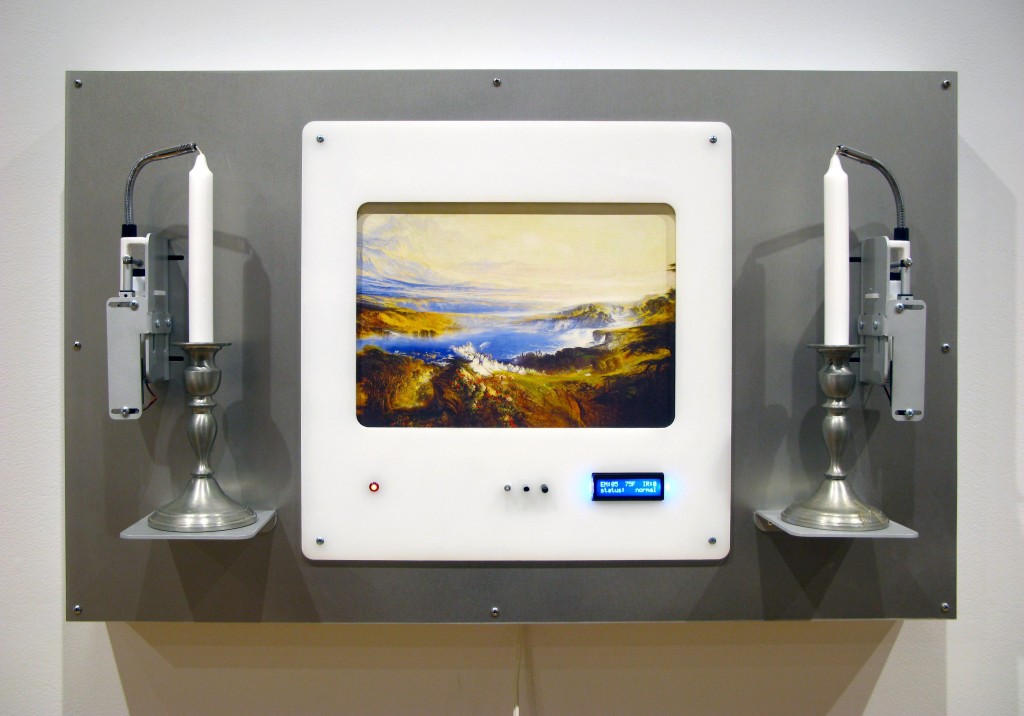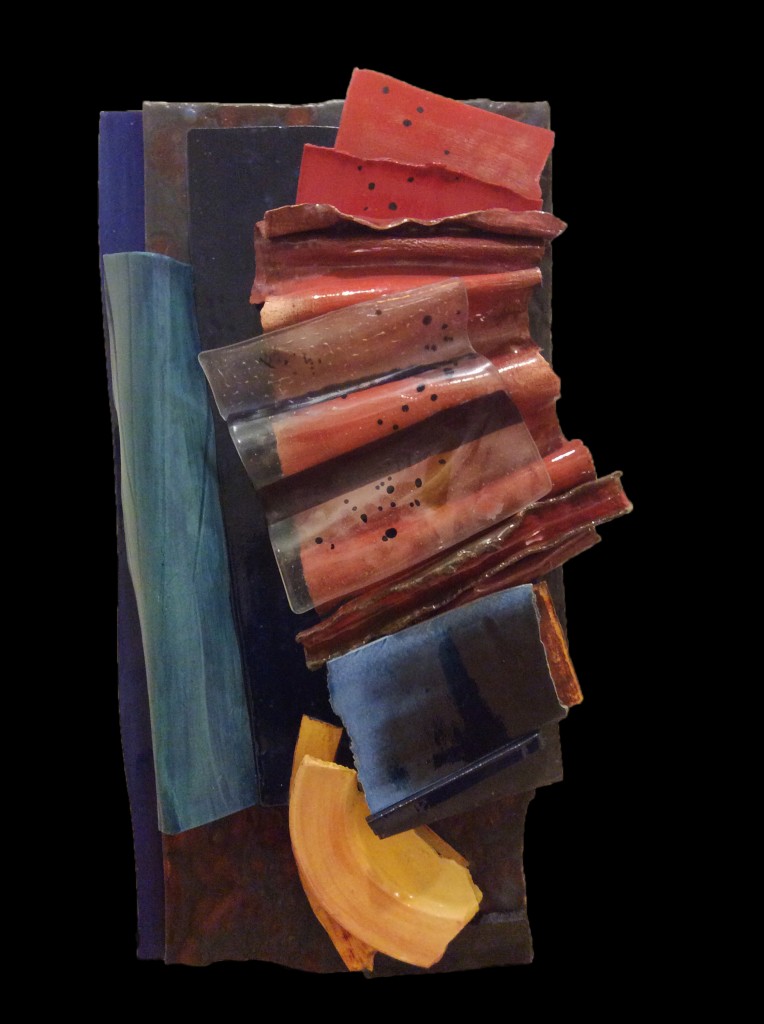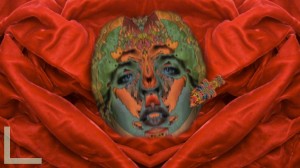The Everson Museum of Art’s autumn exhibits are literally in the mix. One show speculates on links between our world and the afterlife, another features works by Syracuse potters, and a third presents single-channel videos, sound and video installations and other pieces created by artists in residence at Owego’s Signal Culture. Clearly, each exhibition has its own identity.
In Shadows Fernando Orellana has wed his interest in technology with inquiry into mortality, relationships between people and loved ones who have passed from earth, the ways in which we remember those who are no longer with us. To begin the project, he visited estate sales in various locales, including the Syracuse area, and bought items emblematic of various individuals: a dictionary, a player piano, a set of recipes, a bell, even a large Mr. Peanut figure. Each object is the centerpiece of an artwork integrating wood plastics, electronics, a motor and LCD screen.
In addition, each piece suggests the possibility of communicating with a departed one by tapping into the energy associated with the items. Roughly half the works have an interactive video component. By hitting a play button, it’s possible to view a video on a tiny screen showing what might happen if communication was established with the deceased. For “Recipes,” the roof of a tiny house opens, and recipes are inserted into it. In “His Build,” a video shows a hammer pounding nails, in tribute to a master builder. For a third artwork, the pages of the dictionary are turned.
Shadows demonstrates Orellana’s penchant for innovation and invention; he’s built the mechanical devices from scratch. Yet it reveals his skill for communicating by implication. Each work is a memorial of sorts, and that inspires thoughts of gravesites, of the custom, common in various cultures, of burying objects with a departed one. The exhibition poses pivotal questions to everyone who views it. What object or objects best represent your life? Would your choice align with those made by the people who know you best?
Salt City Clay: Selected Works by Syracuse Ceramic Guild easily makes the point that ceramists are creating varied works. They range from Margie Hughto’s fine piece, “Green Ferns,” which hangs on a wall, to Candace Rhea’s work which portrays three goats and a farmhand on a boat and has a folk-art sensibility. Gary Quirk’s “Snowy Owl Vase” coexists with Janice Sheridan’s “Shino Bowl,” and Sally Thompson’s untitled artwork features 11 objects, some small and some slightly larger, that are strung together and hang down from the ceiling.
There’s also a sense of varying approaches to narrative. “Conjuring Childhood,” by Marcus Acevado, sets up a balancing act. He’s placed a rustic scene, with trees and a house, on top of a table. In turn, the table sits atop a large sculpture portraying the head of a bearded man, which is on top of a cushion. “Water and Dreams,” Jee Eun Lee’s stoneware creation, shows a woman sitting on what looks like a stream of water, as the current represents the flow of life. The work is both visually interesting and meditative.
This small group exhibition, juried by Chandra Debuse and Tommy Frank, can only present one or two pieces by each artist, and that places limitations on getting familiar with their work. Nonetheless, this display does a nice job of promoting ceramics and of connecting to the Everson’s signature collection.
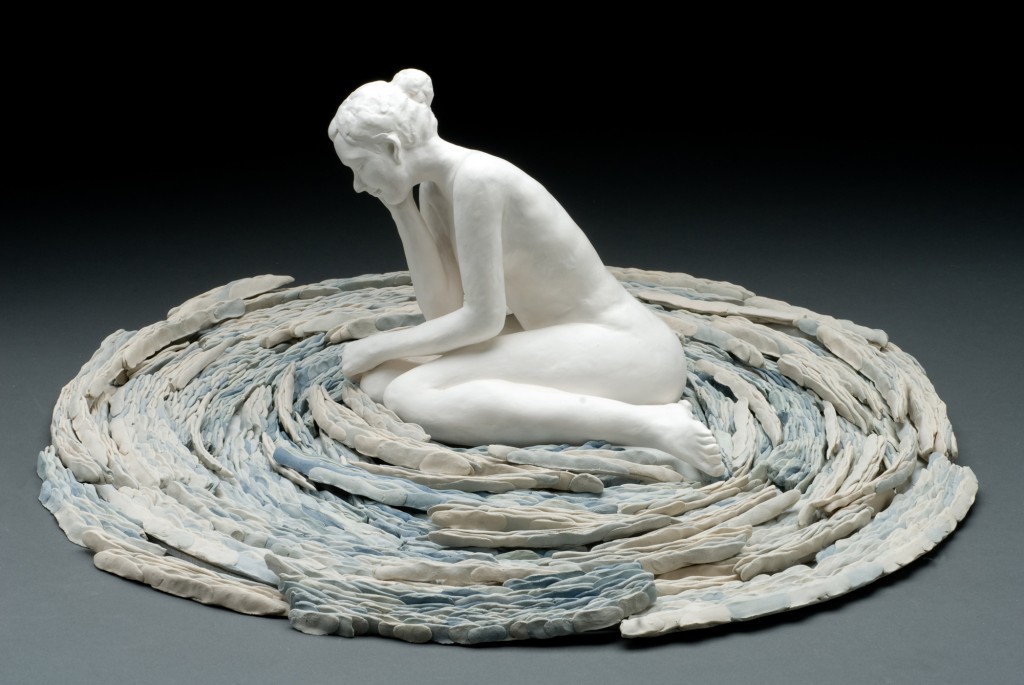 When viewers walk into the exhibit space for Performing Media: Works by Signal Culture Artists in Residence, they will encounter flashing lights and unfamiliar sounds as well as different types of art, such as Lovid’s “Roots No Shoots,” with its display of more than 20 screens. The title of Benton Bainbridge’s “Picturing You,” which includes a TV, camera, computer and other items, is literal and accurate: When a viewer walks nearby the setup, her or his image appears on a screen.
Colleen Keough’s“iLook” trio of single-channel videos is the most interesting work in the show. Running about 50 minutes, “iSeek” has long stretches of standard footage of a country town: people strolling down a road, men riding horses, a woman hanging clothes on a line. Yet the video also has drastically different moments like long close-up shots of vegetation in water. The video “iLook” is full of red, orange and yellow colors which form and reform. Sometimes, they come together to make a mask similar to a person’s face. Other times, they appear and disappear. And “iAm” mixes a few images of people with an array of colors and patterns. Taken together, the videos offer a very different perspective on narrative.
While some videos are simply too repetitive, it’s a mistake to dismiss the entire exhibition. Performing Media introduces viewers to different kinds of work: video or sound installations, prints made from taking still images from video, experimental media. Moreover, it informs viewers that Signal Culture provides opportunities for artists to create this kind of work during a residency.
The three exhibitions will be on view through Jan. 11 at the Everson Museum, 401 Harrison St. The venue is open Wednesdays, Fridays and Sundays, noon to 5 p.m.; Thursdays, noon to 8 p.m.; and Saturdays, 10 a.m. to 5 p.m. There is a suggested admission charge of $5. For more information, call 474-6064.
When viewers walk into the exhibit space for Performing Media: Works by Signal Culture Artists in Residence, they will encounter flashing lights and unfamiliar sounds as well as different types of art, such as Lovid’s “Roots No Shoots,” with its display of more than 20 screens. The title of Benton Bainbridge’s “Picturing You,” which includes a TV, camera, computer and other items, is literal and accurate: When a viewer walks nearby the setup, her or his image appears on a screen.
Colleen Keough’s“iLook” trio of single-channel videos is the most interesting work in the show. Running about 50 minutes, “iSeek” has long stretches of standard footage of a country town: people strolling down a road, men riding horses, a woman hanging clothes on a line. Yet the video also has drastically different moments like long close-up shots of vegetation in water. The video “iLook” is full of red, orange and yellow colors which form and reform. Sometimes, they come together to make a mask similar to a person’s face. Other times, they appear and disappear. And “iAm” mixes a few images of people with an array of colors and patterns. Taken together, the videos offer a very different perspective on narrative.
While some videos are simply too repetitive, it’s a mistake to dismiss the entire exhibition. Performing Media introduces viewers to different kinds of work: video or sound installations, prints made from taking still images from video, experimental media. Moreover, it informs viewers that Signal Culture provides opportunities for artists to create this kind of work during a residency.
The three exhibitions will be on view through Jan. 11 at the Everson Museum, 401 Harrison St. The venue is open Wednesdays, Fridays and Sundays, noon to 5 p.m.; Thursdays, noon to 8 p.m.; and Saturdays, 10 a.m. to 5 p.m. There is a suggested admission charge of $5. For more information, call 474-6064.


Jee Eun Lee’s stoneware creation, shows a woman sitting on what looks like a stream of water, as the current represents the flow of life.




